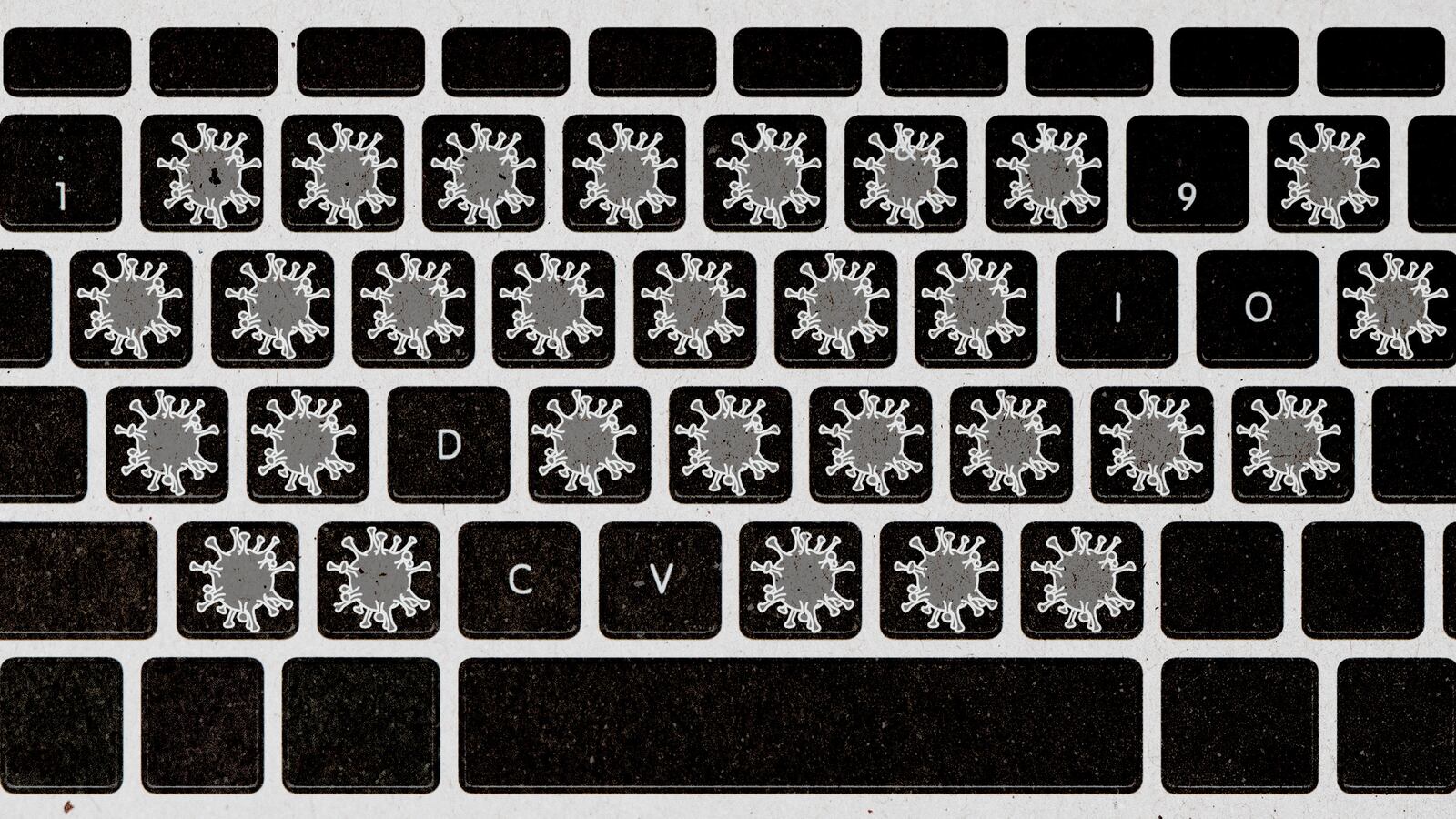For The Daily Beast's membership drive, we're asking our reporters and editors to tell the stories behind some of their biggest stories.
The week Broadway shut down, when office workers all over America’s largest city were told to stay home, I wrote about the “worst-case scenario” for the United States under the coronavirus.
“Nearly every aspect of life—business, education, cultural activity, agriculture, productivity, mental health—would be hit by likely irreparable damage,” I wrote on March 16. “Without public gatherings, and at those numbers, it might be hard to even conduct funerals.”
As of this week, more than 5 million Americans have been sickened with a deadly disease that has changed nearly every facet of society, robbed millions of their jobs, killed family members and friends and colleagues—not to mention kept many of us from hugging, well, anyone but a roommate’s dog.
Two months before I wrote those words, I was a national reporter for The Daily Beast who wrote primarily about education, campus culture, sexual assault—and, a few times, missing lambs. There were, of course, many brilliant science and health reporters who were already working the disease beat long before December 2019. But as COVID-19 cases in the U.S. ticked up, many of us all over the country switched to help cover the biggest story of our lifetimes. Many of us, for the first time, were learning about things like antibody tests, super-spreaders, and social distancing.
Even with a complex subject, the “how” of the reporting was simple. Calling into tele-briefings by the Centers for Disease Control and Prevention. Fielding encrypted tips from Americans who were stranded in Wuhan, then quarantined on California bases. Scanning Instagram for folks stuck on cruises in Japan. Reading official federal reports about transmission. Hours—and hours and hours—of picking up the phone or shooting an email or sending a text to an epidemiologist, a modeler, a nurse, a doctor, a public health professional, about their fears and their predictions and their ideas. Callouts on social media for stories. Searching the phrase “I’m a doctor” on Twitter. Chewing over secretly recorded audio footage of political meetings. Analyzing public documents—and ruminating on more than 30,000 words of spare notes that haven’t even seen The Daily Beast’s homepage yet.
But with all that work, we—the reporters—have also been wrong about so much.
Before it became a right-wing talking point, world-renowned infectious disease experts in Spain and Israel and New York City and Los Angeles compared the virus to the seasonal flu. So we quoted those comparisons, even with their necessary caveats. There were debates over the likelihood that the virus could be spread before symptoms developed—or without symptoms at all—just like there were debates over the effectiveness and necessity of lockdowns. Supply shortages helped lead the country’s top medical experts to postpone issuing guidance on masks so that medical providers could get their hands on life-saving personal protective equipment.
For more exclusive access, insider interviews, and hot scoops, become a Beast Inside member.
It’s imperative to remember, then, that the most diligent and cautious reporters are really just regular people—trying their best—who happen to own recorders and care about the subject. On its own, quoting experts isn’t quality journalism. And even the foremost specialists in the world are wrong—all the time—without being malicious or even negligent.
So it’s what we do with that information—how we sort it, prioritize it, highlight it, verify it—that matters. It’s just as important to acknowledge the mistakes as it is to bow down to the reality of evolving new information about a novel virus. That is, as scientists and physicians have learned more about the disease, so have journalists, legislators, and the public—and, yes, even Dr. Anthony Fauci.
Now, many cities and states have mask mandates. We now know that a portion of the population never develops symptoms, even if they managed to spread the virus to dozens of others. We know now that the U.S. made irreparable and devastating mistakes—in its preparation for the virus, in its testing design and rollout, in its failure to implement a national plan—from which the world may never fully recover.
But we also know so much more about how to (and how not to) treat the virus, about how it spreads, about when a vaccine might be ready, and about how easily an effective, rapid, point-of-care test could change our day-to-day lives.
When things get truly hopeless and isolating, it’s helpful to remember that we will only keep learning how to live with, and fight, and recover from a biological problem too few of us saw coming.
We’re able to report on the latest COVID-19 science because of the support of our members. Become a Beast Inside member today!








